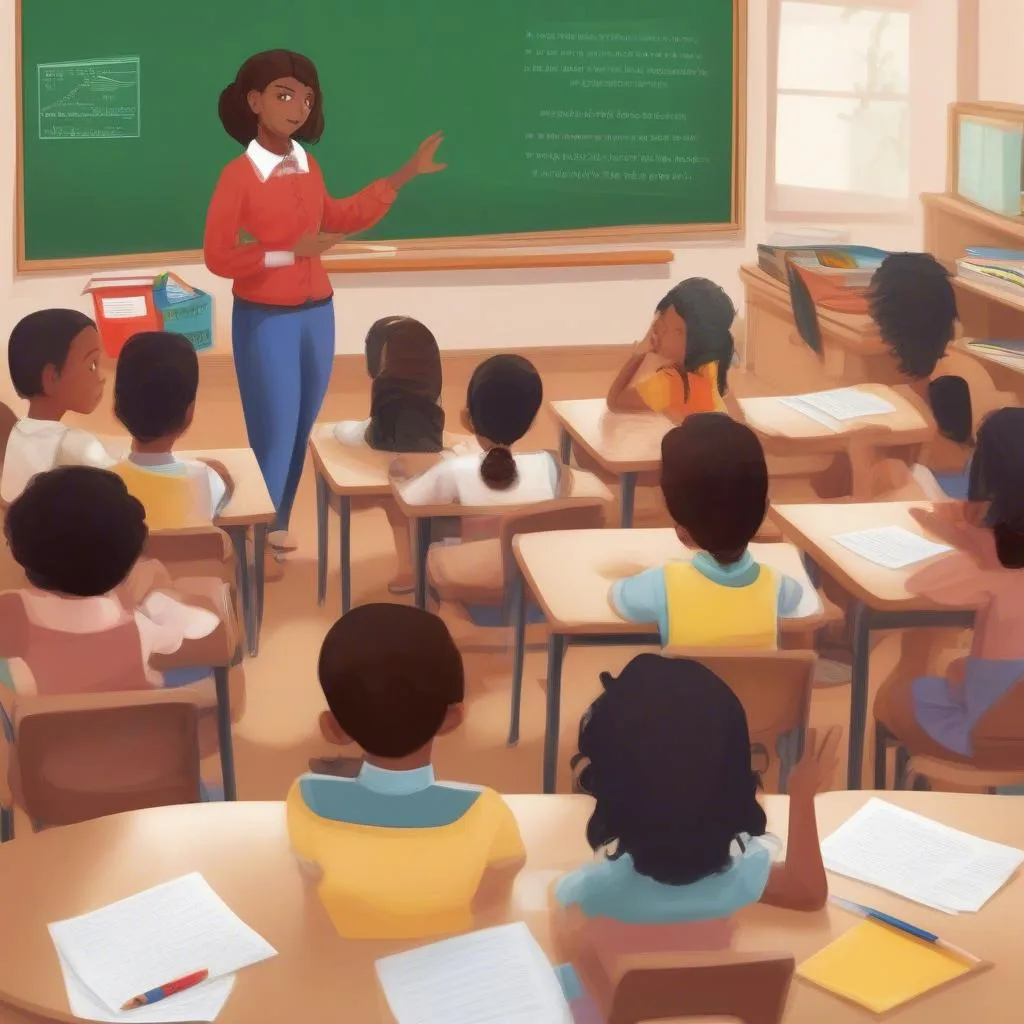Vietnamese proverbs and sayings emphasize the importance of communication and perseverance. For children, especially elementary school students, developing presentation skills is crucial not only for self-expression but also for holistic development.
Why Presentation Skills are Important for Elementary Students
Essential Life Skills in the 21st Century
In today’s society, communication and presentation skills are essential for success in all areas of life. Developing these skills from a young age will help children:
- Boost Confidence: Confidence is key to success. Equipped with good presentation skills, children will become more confident in expressing their ideas, thoughts, and opinions in front of an audience.
- Develop Logical Thinking: Presentation skills require children to analyze and organize information logically, clearly, and understandably. This helps them develop logical thinking, synthesis, analysis, and information processing skills.
- Enhance Communication Skills: Presenting is an effective form of communication. Regular practice helps children refine their communication skills, articulate language fluently, and engage listeners.
- Cultivate Teamwork Skills: Presentation skills also require children to collaborate, share ideas, and listen to others’ opinions.
Improving Learning and Knowledge Acquisition
Presenting is not just a necessary life skill but also an effective learning method. When encouraged to present what they have learned, children will:
- Master Knowledge: Preparing a presentation helps children systemize knowledge effectively and remember it longer.
- Develop Creativity: Presenting is an opportunity for children to express creativity and offer fresh perspectives on learned material.
- Enhance Critical Thinking: During presentations, children will face questions and feedback from the audience. This helps them develop critical thinking and problem-solving skills.
How to Develop Presentation Skills in Elementary Students
Developing presentation skills in elementary students requires patience and age-appropriate methods that cater to their psychology.
Thorough Preparation for Presentations
- Choose Relevant Topics: Select topics that are relatable and align with children’s interests and knowledge. For example, presenting about a favorite animal, a delicious food, or a traditional game.
- Select Presentation Formats: Utilize formats like PowerPoint, pictures, or videos to illustrate presentations and capture audience attention.
- Practice Before Presenting: Encourage children to practice in front of a mirror or with family and friends to build confidence.
Presenting Naturally and Engagingly
- Eye Contact: Encourage children to make eye contact with the audience to create connection and draw attention.
- Speak Clearly and Understandably: Clear and understandable speech is essential for the audience to easily grasp information.
- Flexible Expressions: Appropriate facial expressions and body language make presentations more lively and engaging.
- Audience Interaction: Encourage children to ask questions and interact with the audience to make the presentation more engaging.
Tips to Help Children Present Confidently
To help children present confidently, parents and teachers need to:
- Create a Safe and Fun Learning Environment: A safe and fun learning environment helps children feel comfortable and confident in expressing themselves.
- Encourage Participation in Extracurricular Activities: Extracurricular activities like drama, clubs, and competitions provide opportunities for children to practice presentation and communication skills.
- Always Encourage and Motivate: Parents and teachers should consistently encourage and motivate children, helping them overcome nervousness and self-doubt when presenting.
- Respect Children’s Opinions: Take time to listen to and respect children’s opinions. This helps them feel valued and more confident in expressing themselves.
Expert Advice
According to education expert Nguyen Van A, author of “Life Skills for Children,” developing presentation skills in elementary students is a process that requires patience, age-appropriate methods, and a focus on creating a fun and safe learning environment.
Education expert Nguyen Thi B, Vice Principal of Elementary School C, shares: “To help children present confidently, it’s necessary to create opportunities for them to participate in extracurricular activities, practice in front of a mirror or with family and friends. Additionally, it’s crucial to encourage and motivate them, helping them become more confident when facing an audience.”
Frequently Asked Questions
-
How to help children become more confident when presenting?
-
Create a safe environment, encourage practice in front of a mirror or with family and friends, and provide encouragement and motivation.
-
What topics are suitable for children’s presentations?
-
Choose topics that are relatable and align with children’s interests and knowledge.
-
How to make children’s presentations more engaging?
-
Use illustrative images and videos, make eye contact, speak clearly and understandably, use flexible expressions, and interact with the audience.
-
Is it necessary to teach presentation skills to elementary students?
-
Presentation skills are essential life skills that should be developed from a young age.
Further Suggestions
- Learn more about presentation skills at [link to related article]
- Explore essential soft skills for children at [link to related article]
Contact Us
Please contact us at 0372666666 or visit us at 55 To Tien Thanh, Hanoi. Our customer care team is available 24/7.
 Children participating in a presentation skills class
Children participating in a presentation skills class